Forming steel
With the molten metal flowing from the glowing furnace, it has to be brought into a form.
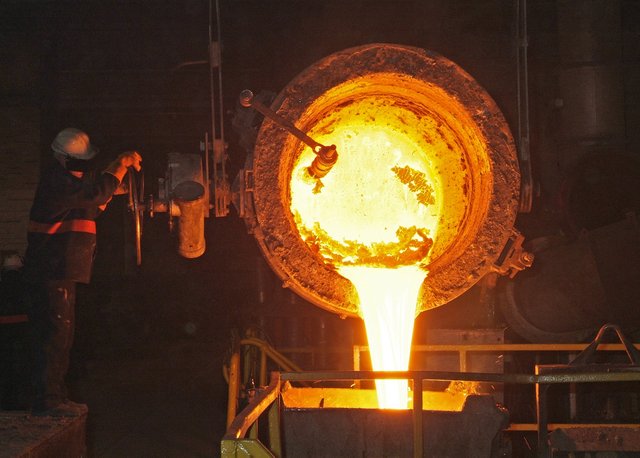
Molten steel before it finds a form. Source
Forming steel
The desired steel can be formed in many ways. Out of these, most of them are just preparation for further processing. The stream of metal has to be put into comfortable bits that can be easy transported and are convenient to work with.
Forging
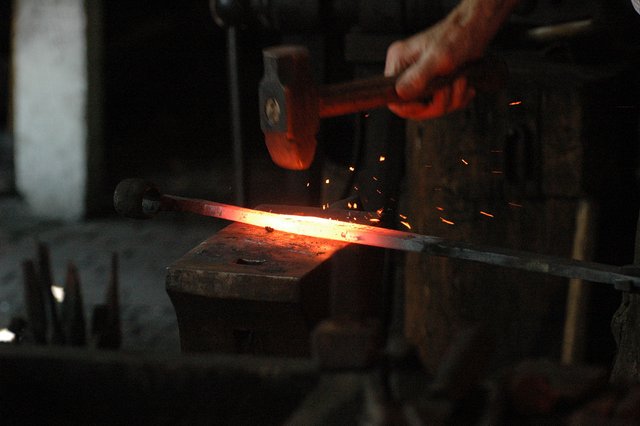
A blacksmith doing his work. Source
The traditional way of forging is done after casting the metal into a starting form. But even a formless piece of metal can be formed into the desired shape. Today, the steel is mostly cast into ingots or beam, which are then transported and reheated in the forge.
Forging is done by heating the piece of metal over 700 °C or even 1000 °C. At this temperature, the metal is formable by blows with a hammer or other type of press.
While blacksmiths have still a tradition of forging, it is also a common procedure in the industry. A lot of parts are forged using formed presses, which hammer the heated metal into the desired shape: axe heads, cylinder shafts, and other products.
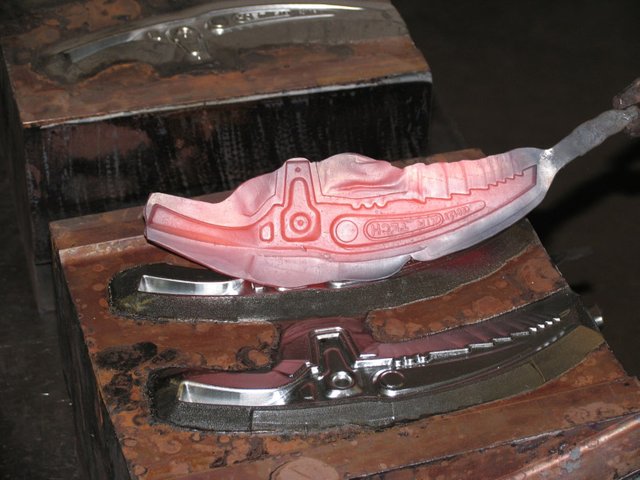
A forged ice tool for climbing. Source
Rolling
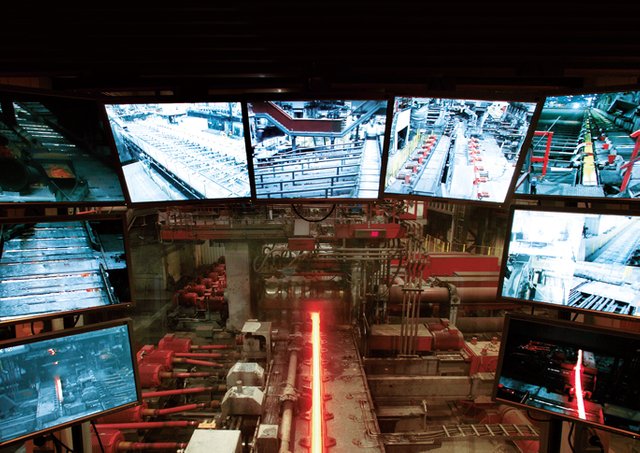
Most advanced dedicated rail rolling mill worldwide. Source
To get a desired profile, the piece of freshly cast steel is rolled while it is still glowing and formable. This can be done for complex profiles or sheet metals alike.
In an industrial rolling mill, the profiles get formed using multiple roll presses, each forming the piece a little bit. Having a series of rolling presses allows to build a production line with the continuous metal from the foundry coming in on one side and a ready product leaving it on the other.
Temperature control is very important to keep the metal formable. The more complex the profile, the longer the production line and the time a part needs to go all through it. During this time it loses heat, gets harder and the presses need more force to form it. This of course is taxing for the machines. To prevent this, multiple burners are installed along the line, or even a oven that reheats the pieces to a proper temperature again.
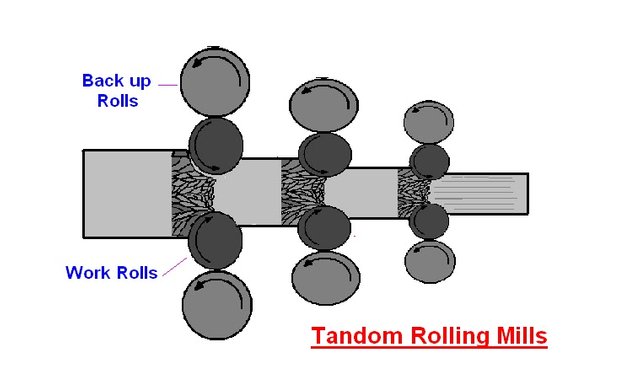
A tandem rolling mill with 3 steps. Source
As long as the foundry is refilled with steel, the production doesn't stop. An interruption of the rolling would lead to the metal from the foundry increasing the pressure on the machinery, and finally pushing its way through the manufacturing in a continuous piece of glowing steel. Such an accident is really expensive.
Casting

Castings cooling down. Source
With more complicated products, there may be no manufacturing process accurately enough to keep every detail. Examples for this are hydroelectric turbine wheels, forging presses, gears, railroad truck frames, valve bodies, pump casings, mining machinery, marine equipment, Turbocharger Turbines and engine cylinder blocks.
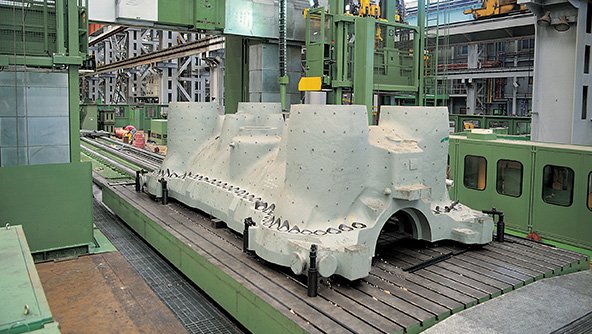
*Picture from the production of a turbine housing for a nuclear power plant. Source
A big difference of casting with carbon steel to casting with cast iron (with carbon >2%) is that the carbon steel is much easier to machine. Since the carbon steel is more elastic than the hard, but brittle, cast iron, it is suitable for mechanical parts with high vibrations.
Casting with alloys allows for more abilities of the material.
Thank you for reading!
If you like this article, I would be very happy if you did me a favor and resteem it!
Follow me also for more on Engineering and Technology.
If you have questions regarding the development of your product, feel free to contact me on:
This post has been linked to from another place on Steem.
Learn more about and upvote to support linkback bot v0.5. Flag this comment if you don't want the bot to continue posting linkbacks for your posts.
Built by @ontofractal
and Rearden Metal is GOOD :)
The best :D
Another nice post, I've been enjoying this series.
Thank you!
Great to have you as a fan!